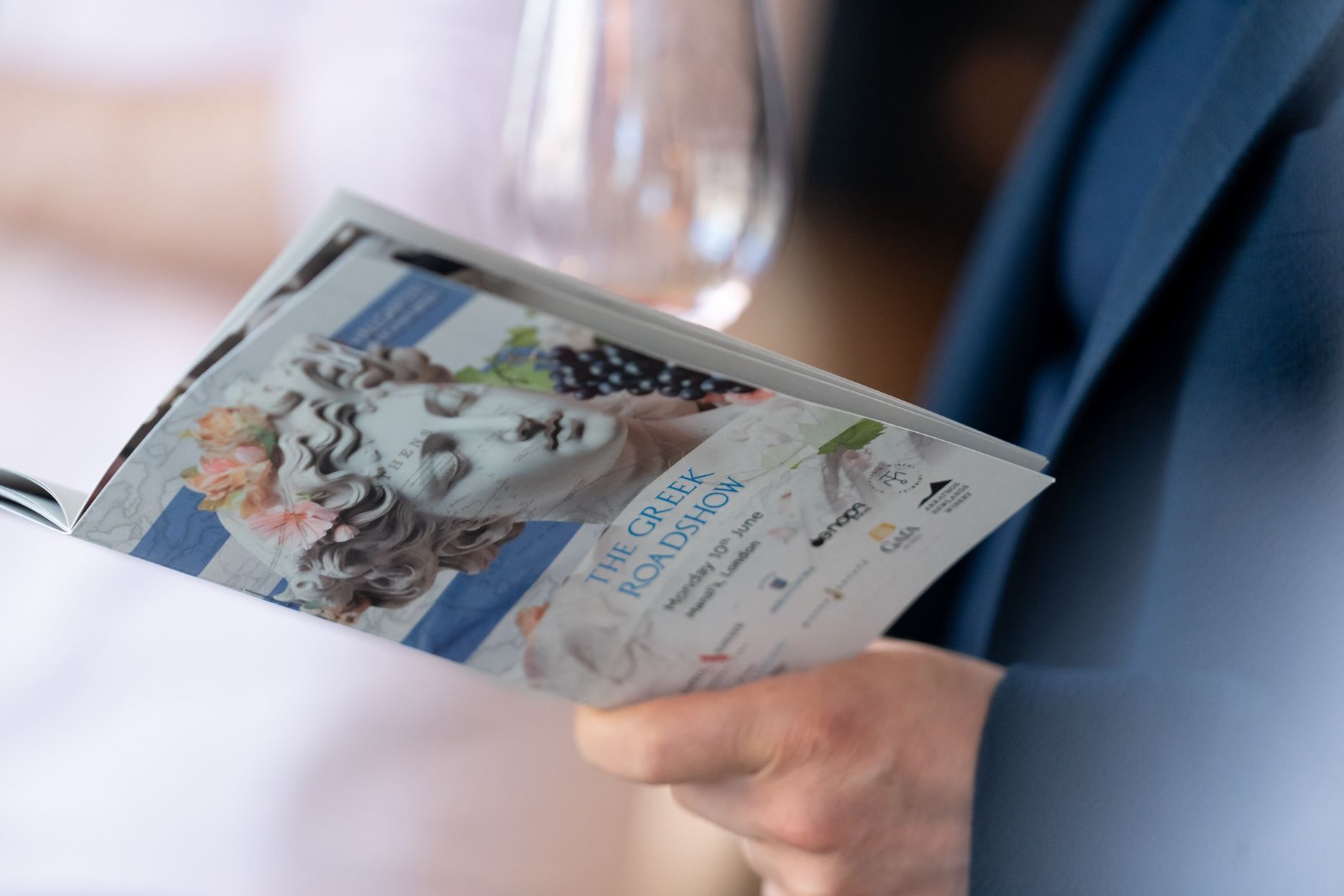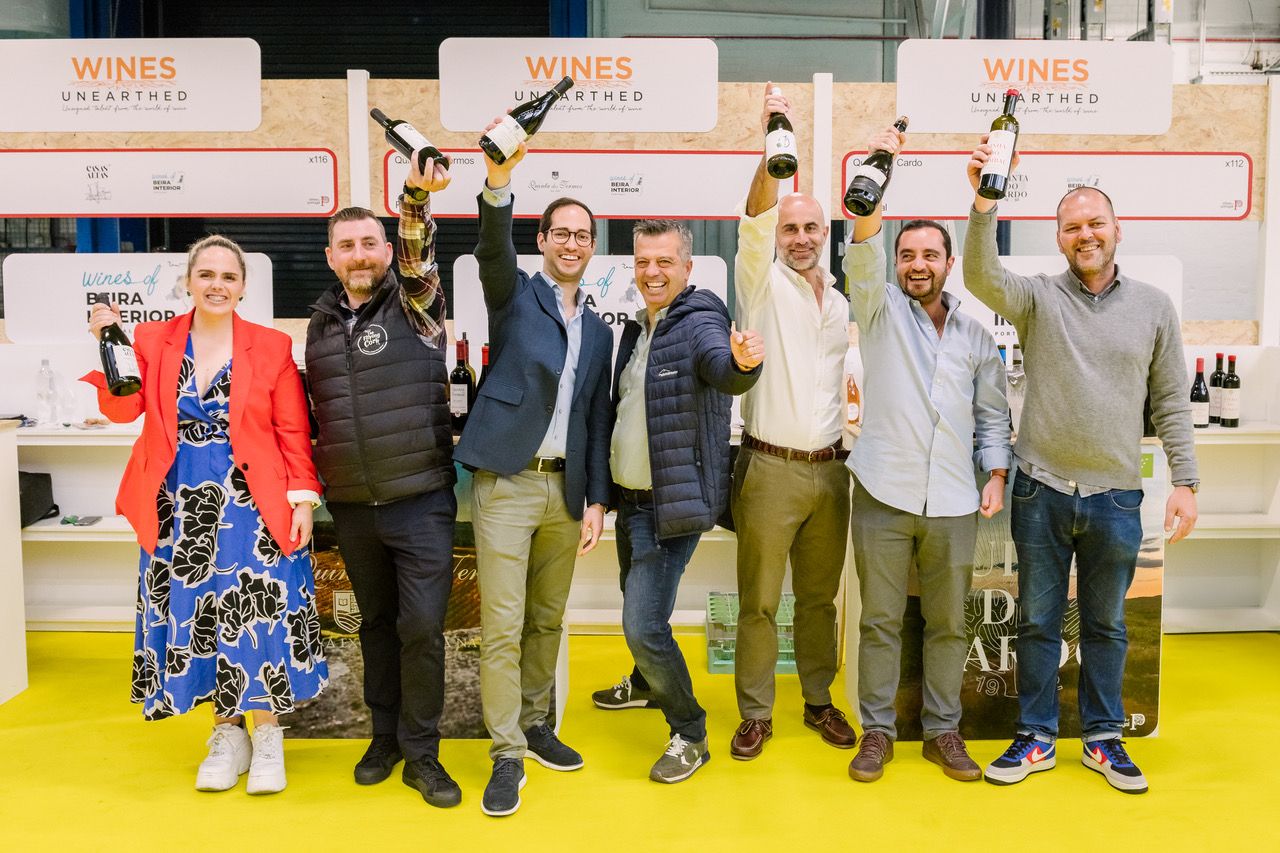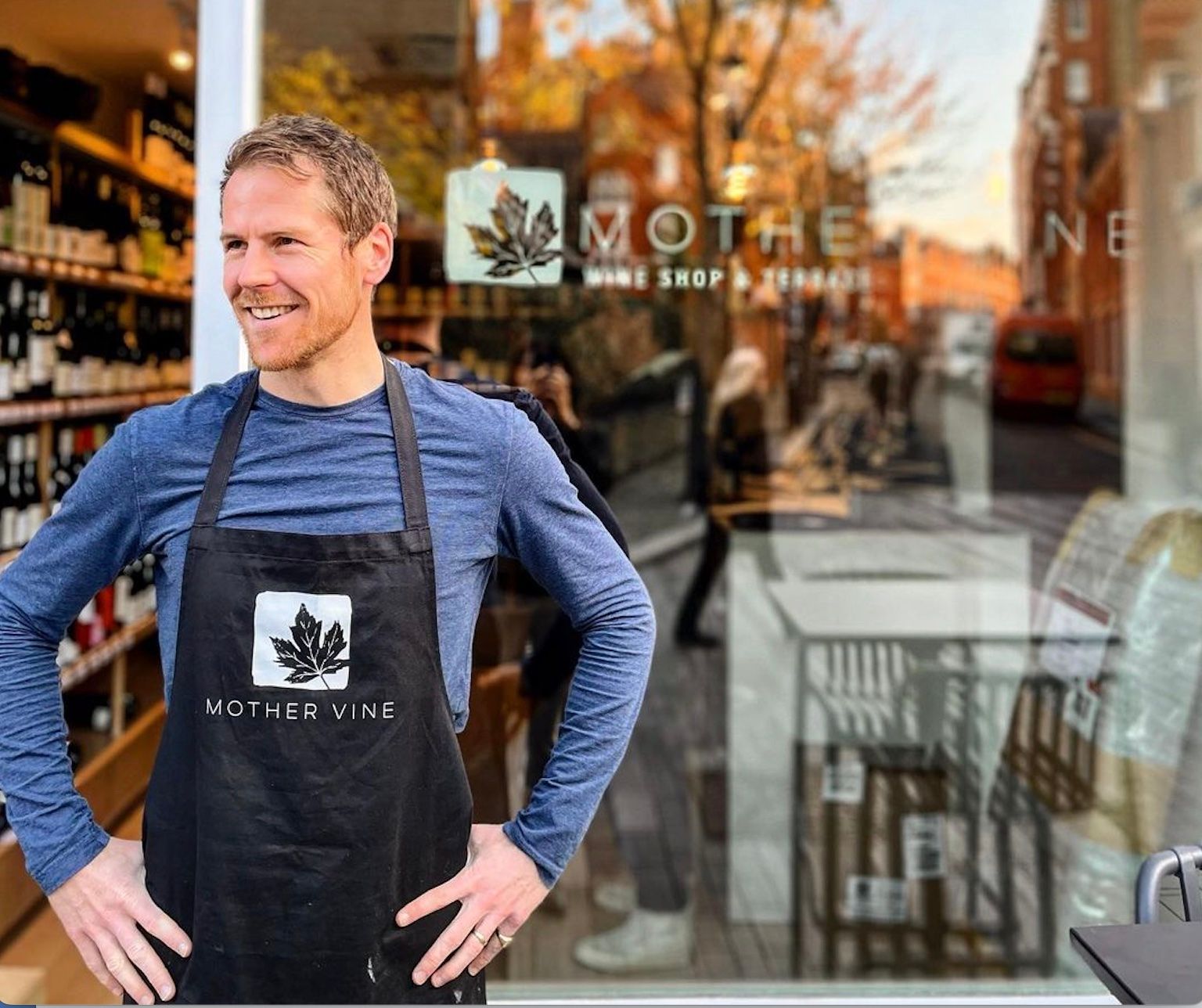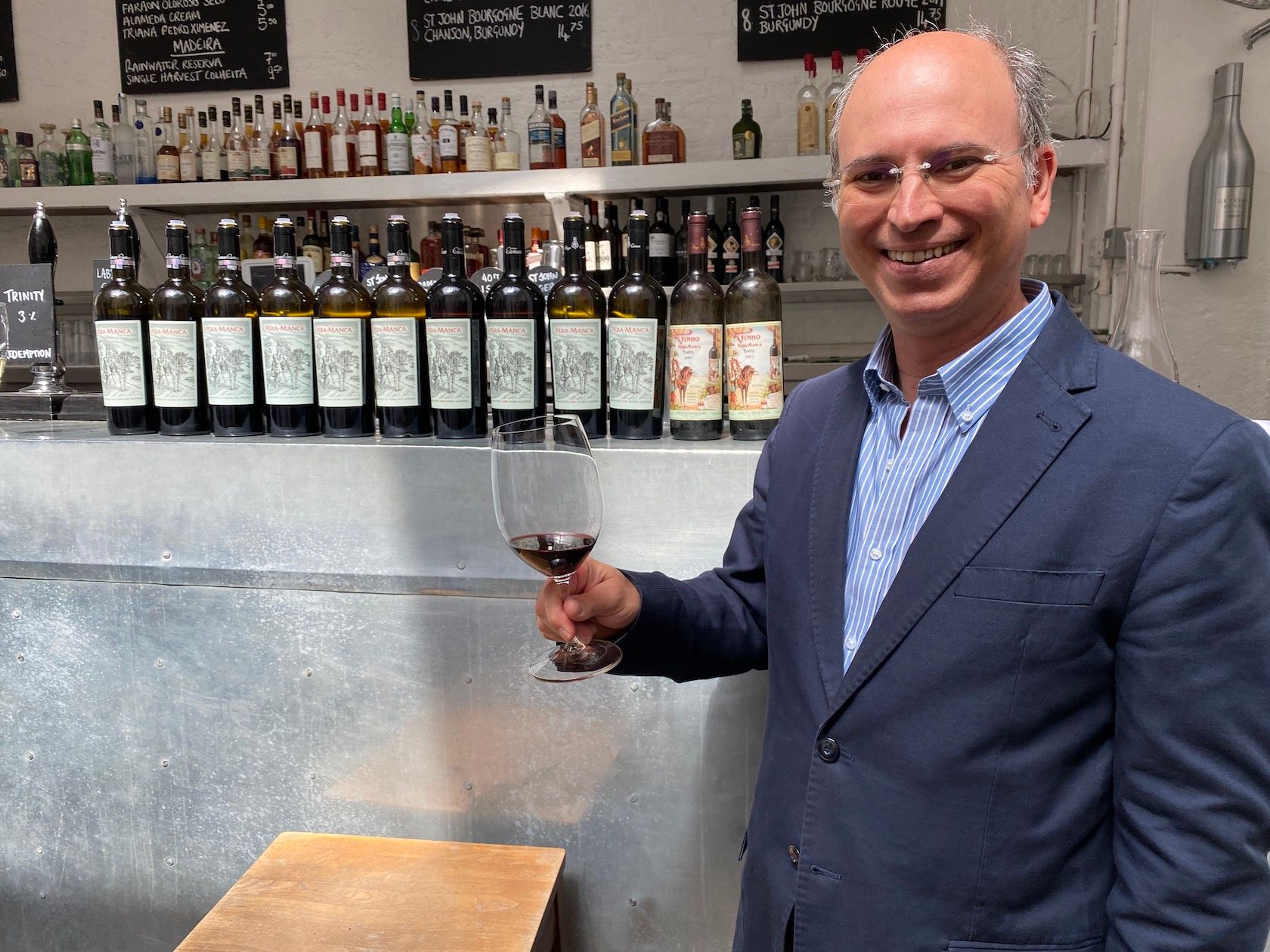Leon Bester has seen many changes in South Africa’s Wellington wine region and at Napier Vineyards, but he tells Helen Arnold why he believes his styles of Bordeaux-inspired premium wines are ideally placed to work in the UK fine restaurants and bars.

Stunning backdrop of the Wellington wine region
Tell me about your background and how you have seen the Napier winery develop.
I’ve been with Napier for 17 years, so my first vintage was in 2000. We have made a lot of changes since then, including introducing irrigation systems, soil sampling and investing in weather stations. We also did a lot of replanting in the beginning, pulling up those vines that didn’t fit our criteria and replanting with those that better fitted our soil profile. This now gives us a consistent supply of grapes of a certain age without the quality being lowered when we replant.
We produce two ranges, the Napier tier, which is our premium line, and the Lion Creek tier. Within each range we produce three wines. With Napier we have a Bordeaux Blend, the Red Medallion; St Catherine, a Chardonnay, and a single vineyard Cabernet.
We started with 15 acres, and now have 88. The older vines which are between 28 -35 years old are reserved for our premium range, and we replant them to keep them in the system.It’s all about precision viticulture and having the right fruit in the cellar.
What is your production capacity?
We are now at 150,000 bottles a year, and we can go up to a max of 400,000. However, our premium wines will always remain at around 20,000.
What was this year’s vintage like?
2017 was a very a very interesting vintage, while also one of the most challenging. We had a very dry season, and in our area in Wellington, we normally see sugar ripeness much earlier than phenolic ripeness, so we do a lot in vineyard to ensure pheonlic ripeness happens at the same time. But this year that happened on its own without a lot of effort Verasion was two weeks earlier, so there was a very long ripening period. We expected low volumes, but it turned out to be average, and of very good quality.
Any particular difficulties?
Everything ripened at the same time, and usually in South Africa we have between mid January to the end of March or the beginning of April to harvest. But we had a slow start at the end of January, and everything was ripe by February. We had to prioritise the premium grapes and ensure they were harvested at exactly the same time, and the rest had to fit in when we could manage it.
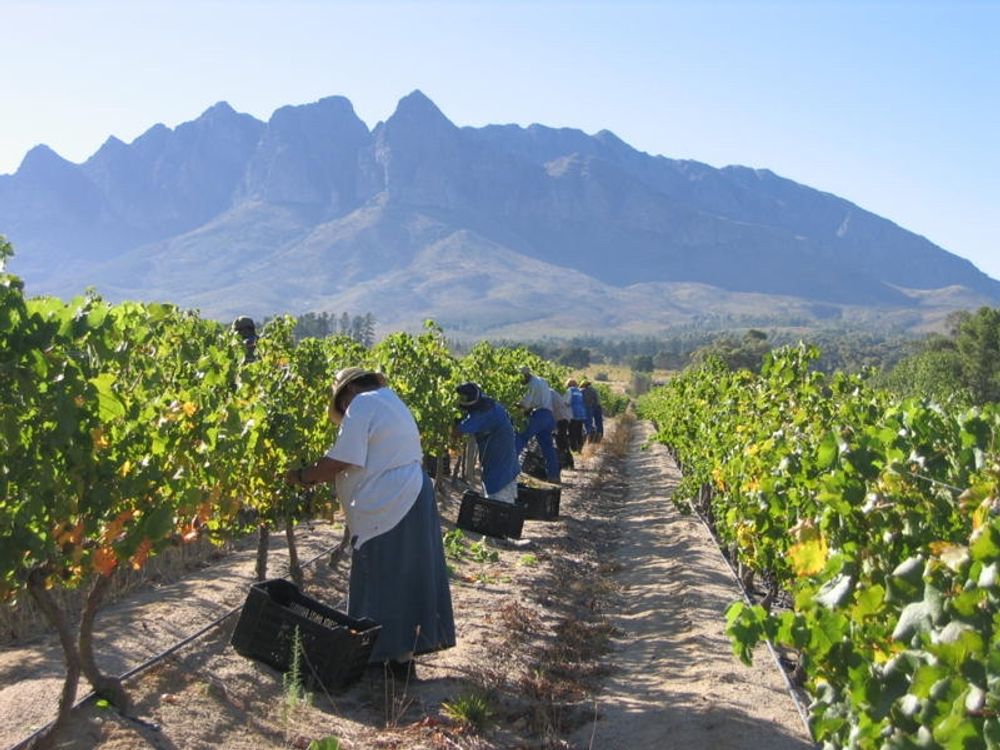
The 2017 harvest has been a challenging but ultimately rewarding one
What is your wine making philosophy?
In South Africa we say we have a very old new world culture. Our wine industry is 350 years old, but the world still regards us as a new world producer. I spent a lot of time working in France and enjoy their old world styles and ways of production, but in South Africa we like to produce premium wines in a old world style with new world tech. My biggest belief is that if you do a lot of work in the vineyard the process in the cellar is minimal.
Who are your wines aimed at?
The wine business is changing and you have to look at the consumer. We have to accommodate both traditional connoisseurs who are buying wine and ageing it, and also younger consumers who want to walk into a shop and buy a wine that is ready to drink tonight.
And it’s a challenge for us to fulfil the needs of these different types of consumers. We age our Red Medallion for four years in the cellar, as we want to put it into the market where connoisseurscan see the potential of wine and buy it and cellar it, but we also want younger consumers who can see it is already drinking well.
It’s getting the balance right between tannin structure and mouth feel, which is a challenge.
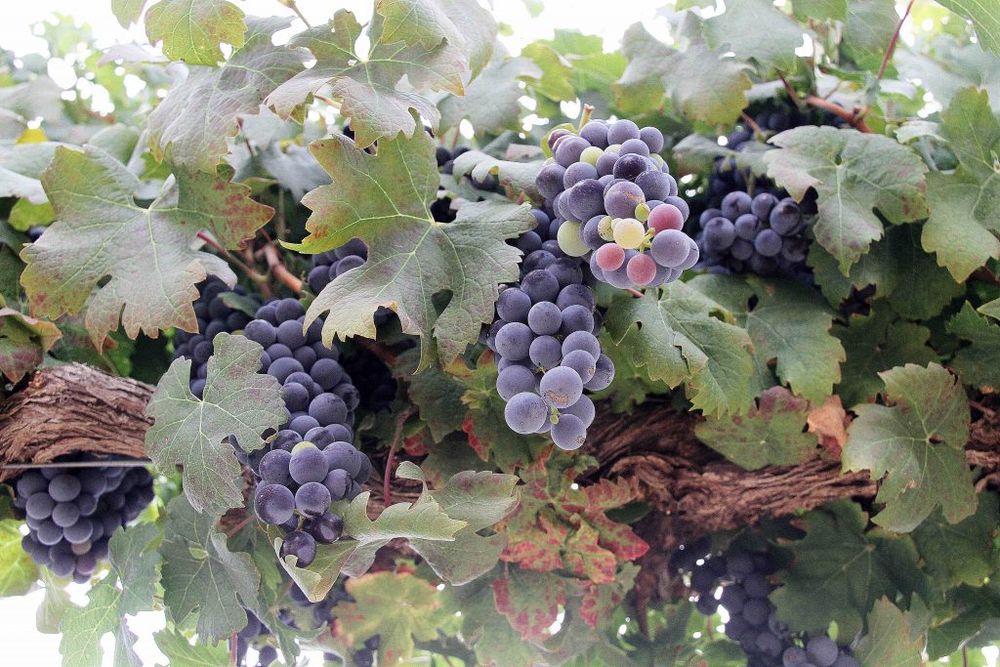
How much do you export and which are your biggest markets?
We export nearly our entire production, though we do have some private customers and some restaurants in South Africa we sell to. Our biggest export market by far is Japan, which accounts for around 70% of our volumes. Other big markets for us include Belgium and the Netherlands. We are hoping to break into the UK soon with our new partnership with Reh.
Describe the Japanese wine market.
It is difficult to start doing business with the Japanese at first, they like to take you out and test your loyalty. Half of exports to Japan are premium wines, as there is a big market there for top wine. And consumption is increasing, as wine becomes a fashionable drink, particularly amongst young people. Supermarkets have premium wine areas which are cordoned off from the rest of the store, and often have sommeliers in place, which is helping to boost interest and sales.
How did you first break into the Japanese market?
The author of the Manga, the cartoon strip that everyone in Japan reads, is a great wine lover, and if he writes about wine then people buy it. We got involved with him, and that’s how our market in Japan kicked off.
What perception do you think the Japanese have of South Africa and its wines?
I think a lot of Japanese don’t have a clue where South Africa is! But there is a trend of moving away from the traditional towards the more experimental amongst young Japanese consumers, and wine has become fashionable and hip. It’s never been a part of traditional Japanese culture, but that is changing, as a lot of restaurants and up and coming chefs are embracing wine.
In what other export markets do you sell your wines?
Belgium is a good market for us, largely via the restaurant trade. It’s a much easier market to sell into than Japan, as most Belgians are familiar with South Africa and our wines. We have close cultural ties with Belgium too, which certainly helps.
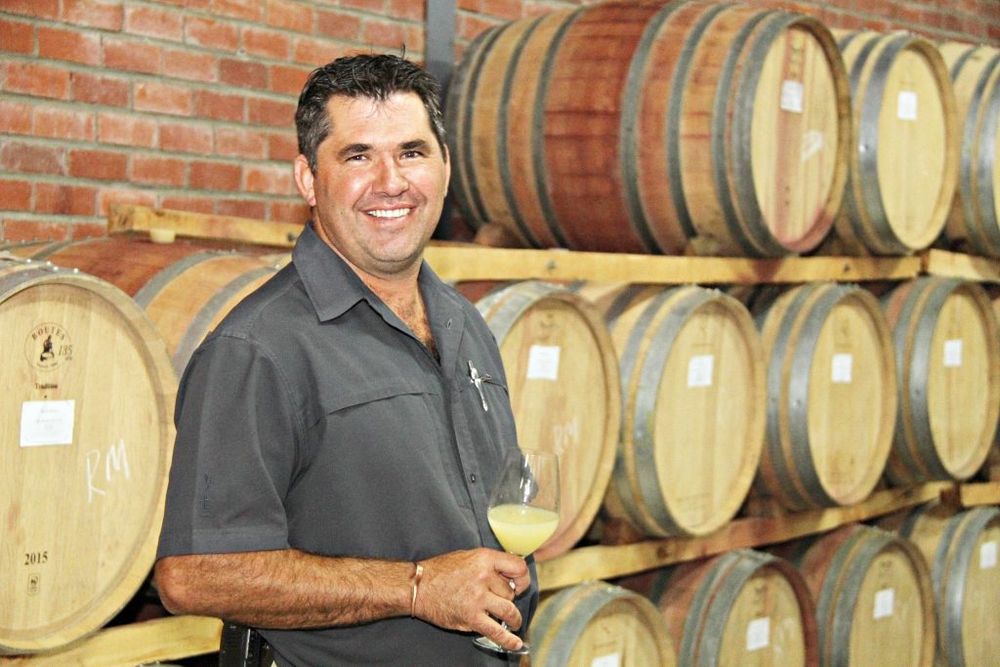
Napier’s Leon Bester is hopeful Reh Kedderman will help its push in to the UK but is cautious about pricing demands
What are your ambitions in the UK market?
While the UK is one of the biggest export markets for South African wine overall, my concern is regarding the huge price war in the UK. British consumers want a lot of cheap wine from South Africa, and that is what they continue to expect. But in an average year, South Africa can produce a better quality wine to price ratio compared to Italy for example.
Prices are going to go up in the coming months, with what is happening in Germany and France. They have had very bad harvests, so we can be much more constant in the price/quality ratio we offer.
Which export markets are growing?
The Chinese market is growing hugely, but it’s a very different market from Japan. They are not so loyal, and if they find a cheaper brand down the line they’ll switch. If staff get offered two yen more per month by a rival company they will move.
Every time we visit China, there are new people to deal with which makes it difficult to establish good working relationships. The Chinese buy very much on image too, if it’s a Rothschild they will buy it for the name, even if they don’t know what it tastes like. They like the prestige that a big name brings.
And you have to bear in mind that the Chinese domestic wine production is bigger than South Africa’s. I have tasted some horrible wines from China, but also some that are not bad. Its definitely improving, but I don’t think much of the climate is well suited to winemaking as it can be so extreme, and its a tough call to make consistently good wine in those conditions.
Any other markets you think offers big potential?
Taiwan is an interesting market. There are new wine bars springing up everywhere and they are really into their wine. Young people in particular are keen to find out as much about wine as they can, and are very experimental. However, wine drinking is very much in its infancy in the country, which offers great potential
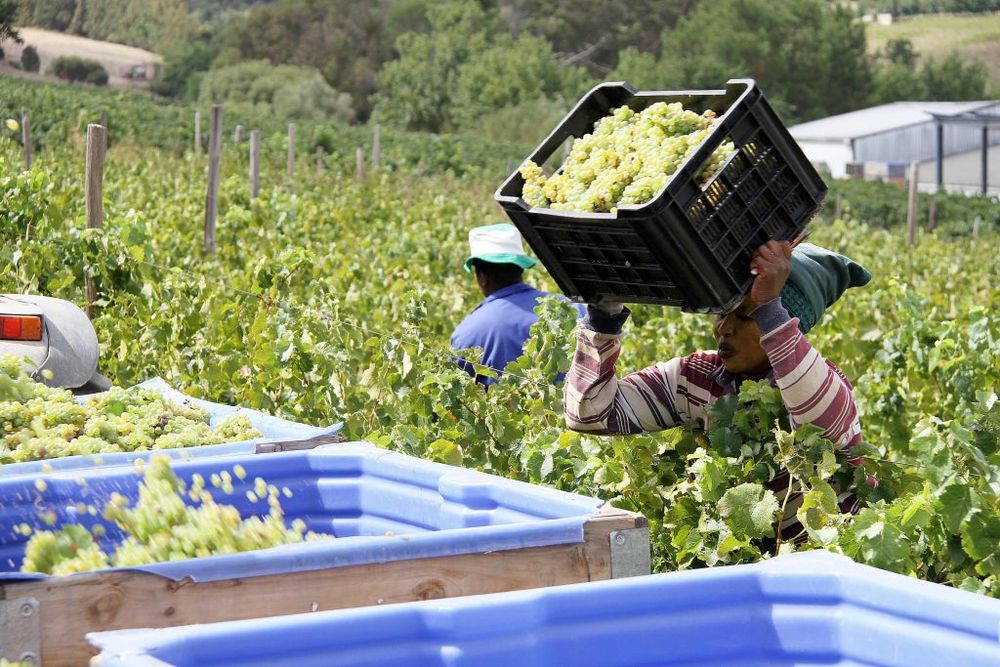
Napier has built a strong demand for its wines in Asia, particularly Japan
How do you think South Africa will overcome the idea it is mainly about cheap and cheerful wines?
Undoubtedly we do we have a big production of wine that fulfils that category. However, in the way that you can’t compare a French wine that is produced for a Euro to a bottle to a Chateau Petrus, the challenge for South Africa lies in presenting premium wines in the right way so that the consumer becomes aware of the quality available.
And the best way to achieve that is in person, by getting the bottle on the right table and telling the right story. People are slowly getting the message that South Africa can offer good quality wine from serious producers.
Do you think the generic industry bodies are doing enough to help change the perception of South African wine?
They are, but we must also realise that there are still relatively cheap wines available from South Africa and that market is not going to go away, so the regulatory bodies need to look at those, but accommodate us too. The big challenge lies in educating consumers that you can have different quality wines from the same country. This is something that is obvious to the majority of Europeans who travel to places like France and they can see for themselves the diversity available from a single country.
Do you think Brexit will have any impact on your business?
I don’t know, and most people in the EU don’t know either. It might be that it opens up new opportunities, though one thing that would help South Africa would be a free trade agreement.
Which wine are you most proud of?
It’s a difficult one – I like the Red Medallion, and the philosophy behind what we are trying to achieve over a long period of time. The best wine should be the wine in your glass, and that may differ between today and tomorrow. Why restrict yourself and only drink one style of wine?
Who do you most admire in the wine industry?
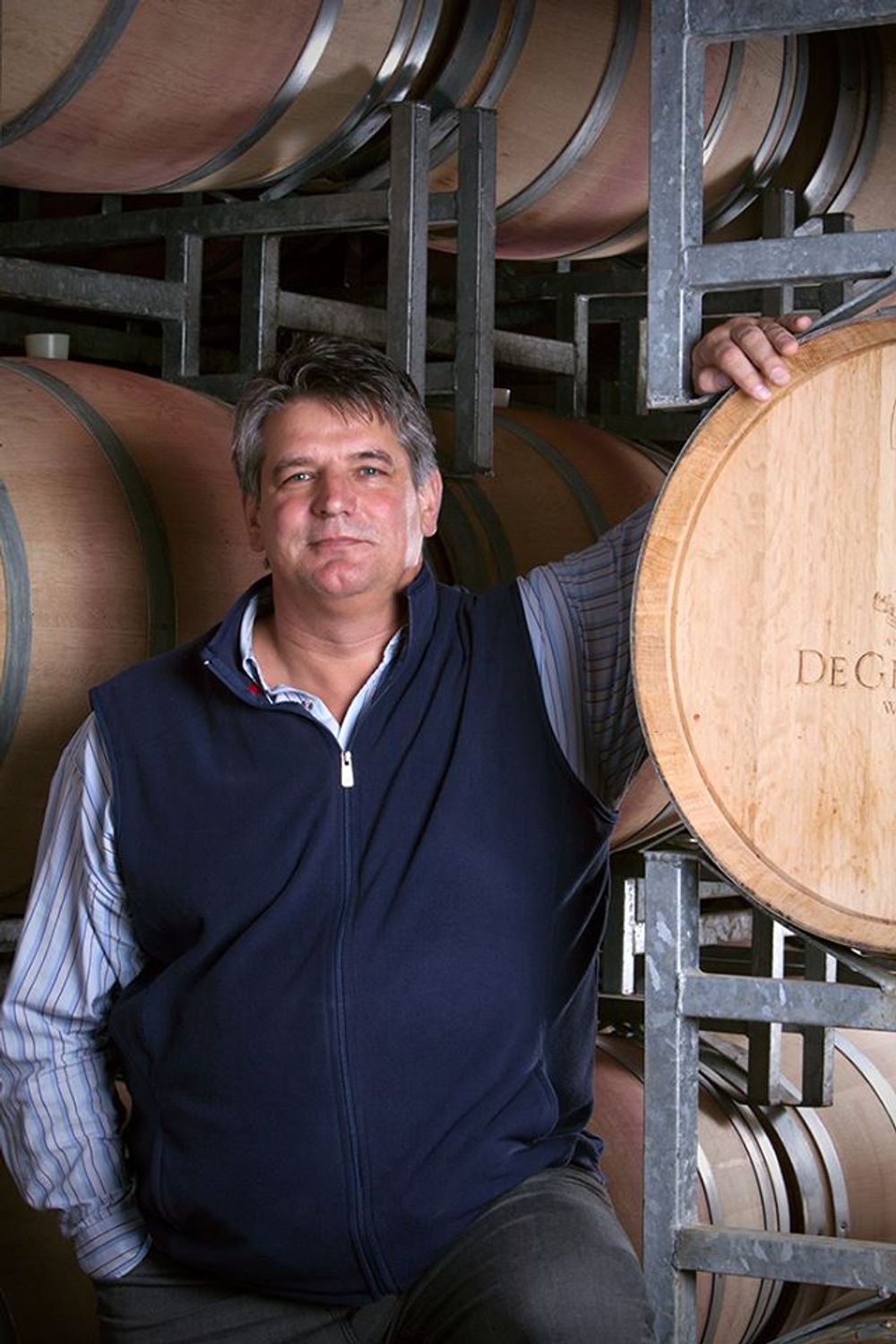
Charles Hopkins at De Grendel winery has been a big influence on Bester
I worked with Charles Hopkins [renowned South African winemaker at de Grendel winery] in my younger days and he was someone not afraid to push the envelope and try different things. But the guys that I have learned the most from are the cellar workers in Bordeaux in France. Not so much the head wine maker or the oenologist, but the guys who are working with the grapes every day in the cellar and the vineyards.
Was it always your ambition to be a winemaker?
No, I drifted into it really. I worked as a navy diver for three years in my younger days. But I was brought up on a farm with a vineyard and my dad was a viticultural lecturer in Stellenbosch, so I guess I was influenced by him.
When I left the the Navy I worked various harvests in South Africa, as well as Germany and the US, and then came back home to study oenology. But I think it’s the best life in the world now. And certainly a bit safer than being a navy diver! I live in the vineyards with my wife and three kids, and have a very outdoorsy lifestyle.
What is the South African wine industry’s biggest challenge?
Dealing with lack of water is a big issue. We are doing a lot of work with viticultures on a less water-based system. The challenge lies in how we produce great wines with less water in such a dry climate.
At one stage some growers planted vines in areas that had water available, but that supply was inconsistent. This was maybe the biggest thing that changed the quality of our wines as we discovered that planting in these areas was the wrong thing to do. Far better to concentrate on growing vineyards with hardier varieties able to cope with less water. That is going to increase our quality.
Of course, the political situation in South Africa is often volatile, and managing a business with that as a backdrop can be challenging. How we deal with that in international markets too plays a big role, and our exchange rate and currency are big issues. It’s nice to export, but we buy in a lot of equipment such as bottles, barrels and screwcaps from abroad, and that is currently costing us a lot.

The Napier estate includes 14 houses for its workers
Another key challenge is to get the poorest people in South Africa educated, and to invest in them. At Napier we have built 14 brand new houses for the families who live on the farm and work in the vineyards, and pay for the education of their children, as well as their transport to and from school. We have also set up a crèche for the younger children, and are looking into setting up an educational trust that would take kids into secondary /higher education. Not everyone wants a higher education, but they might want to learn a skill instead, and if we can provide that, then that helps improve staff retention.
We also maintain the quality of the workforce, and don’t lose skills.
What does the future hold for the South African wine industry?
I think the industry has reached a stage where it is shaking its feathers. We have the sunshine, the climate, and can plant vineyards anywhere, though it is an arid land without a lot of water. I think there will be more focus paid to where it is viable to plant, and we will see much more focused site specific wines, with more emphasis on terroir. We are tending to move towards the old French method of planting in certain areas and the concept of terroir is becoming much more important. It’s an exciting time for the South African wine industry as we are experimenting with a lot of stuff and by doing that we are finding lots of nice niche areas with very interesting combinations of styles coming to the fore. While we have our traditional styles, South African wine is a very forward thinking evolving market.
What are your ambitions for the Napier?
I want to establish our premium wine in the world market. It’s a sustainable business in growth. I don’t see us growing in size, so much as focusing on boosting our premium range, servicing our existing market and educating consumers by showing them the versatile terroir in our valley.

